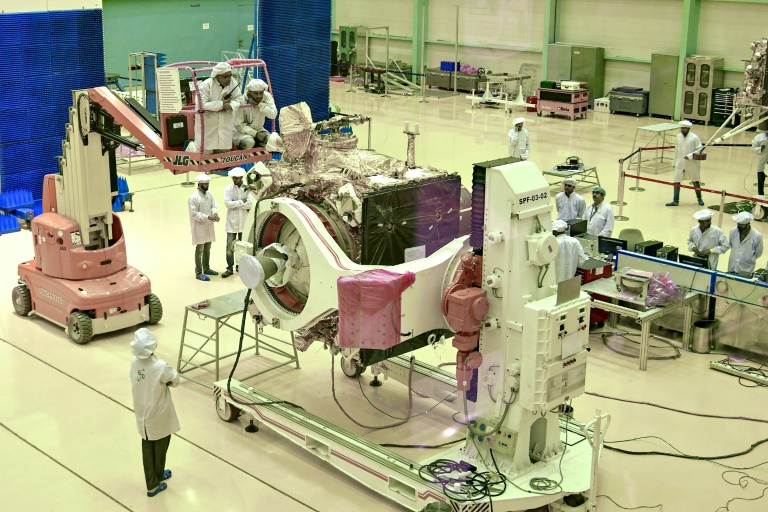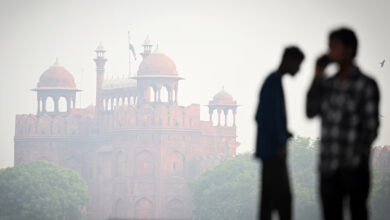
Thousands gathered to witness India’s second attempt to send a landmark spacecraft to the Moon on Monday, a week after a fuel leak forced the launch to be postponed.
Indian scientists offered ritual prayers at temples near the base, according to media reports, and said they were confident there would be no repeat of the problem that led to countdown being halted 56 minutes before last week’s launch.
The South Asian nation is bidding to become just the fourth nation — after Russia, the United States and China — to land a spacecraft on the Moon.
The fresh launch attempt for Chandrayaan-2 — Moon Chariot 2 — is scheduled for 2:43 pm (0913 GMT).
With light rain falling on the Satish Dhawan Space Centre at Sriharikota, an island off the coast of southern Andhra Pradesh state, President Ram Nath Kovind joined 7,000 dignitaries and flag-waving school children waiting for the launch.
The official countdown started late Sunday and the Indian Space Research Organisation (ISRO) said the fuelling of the Geosynchronous Satellite Launch Vehicle (GSLV) MkIII, India’s most powerful rocket, was going according to plan.
ISRO chief K. Sivan told The Hindu newspaper late Sunday that there was “no chance for any technical fault to arise now”.
“When the technical fault happened, we stopped the countdown, identified the issue, and rectified it.”
Destination Moon
The rocket will take up an orbiter, a lander and a rover, and has been almost entirely designed and made in India.
The 2.4-tonne (5,300-pound) orbiter is expected to circle the Moon for about one year, taking images of the surface, looking for signs of water, and studying the atmosphere.
The lander — named after Vikram A. Sarabhai, the father of India’s space programme — will carry the rover and be placed on the surface near the lunar South Pole.
ISRO scientists will remotely control the rover named Pragyaan — “wisdom” in Sanskrit — as it carries out experiments. It will work for one lunar day, the equivalent of 14 Earth days, studying rocks and soil on the Moon’s surface.
Experts said setbacks such as the halt to the first launch were to be expected because of the complexity of the mission.
“In such an ambitious and prestigious mission like Chandrayaan, one cannot take a chance even if a small flaw is detected,” Rajeswari Pillai Rajagopalan, head of space policy at the New Delhi think tank the Observer Research Foundation, told AFP.
Former NASA scientist Kumar Krishen said India’s space agency should be praised for taking on ambitious projects like Chandrayaan-2.
“We should keep in mind that space exploration is risky as many systems have failed in the past and many lives lost,” he told AFP.
Aside from propelling India into rarefied company among spacefaring nations, Chandrayaan-2 also stands out because of its low cost.
About $140 million has been spent on preparations for the mission, a much smaller price tag compared with similar missions by other countries.
The United States — which is marking the 50th anniversary of Neil Armstrong becoming the first human on the Moon — spent the equivalent of more than $100 billion on its Apollo missions.
Chandrayaan-2, and India’s space programme as a whole, are a source of national pride.
Prime Minister Narendra Modi has vowed to send a manned mission into orbit by 2022, and India hopes to seek out commercial satellite and orbiting deals.
The new mission comes almost 11 years after the launch of India’s first lunar mission — Chandrayaan-1 — which orbited the Moon and searched for water.
Image: AFP/File / MANJUNATH KIRAN The South Asian nation is bidding to become just the fourth nation to land a spacecraft on the Moon




